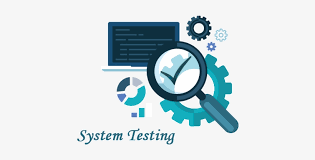
In today’s dynamic and technology-driven world, software has become an integral part of our daily lives. From mobile applications to complex enterprise systems, the quality and reliability of software are crucial for seamless user experiences. This is where software testing plays a pivotal role. In this comprehensive guide, we will delve into the world of software testing, its significance, various testing methodologies, best practices, and frequently asked questions. Whether you’re a developer, project manager, or someone curious about software testing, this guide has got you covered.
Software testing is a systematic process that evaluates the functionality, performance, and security of a software application. It ensures that the software meets quality standards, performs as intended, and delivers a glitch-free experience to users.
Why is Software Testing Crucial?
Software defects can lead to financial losses, reputational damage, and dissatisfied users. Rigorous testing helps identify and rectify these defects early in the development cycle, reducing the chances of issues cropping up post-release.
Common Software Testing Methodologies
Agile Testing
Agile testing integrates testing into the development process, promoting continuous feedback and collaboration. This methodology ensures faster bug identification and smoother project deliveries.
Waterfall Testing
Waterfall testing follows a linear approach, where testing occurs after the development phase. While it’s less flexible than Agile, it can be effective for projects with well-defined requirements.
Exploratory Testing
Exploratory testing involves simultaneous test design and execution. Testers explore the application, identify defects, and create test cases on-the-fly.
Key Principles of Effective Software Testing
Early Testing
Testing from the early stages of development prevents defects from propagating further, reducing the cost of fixing issues.
Exhaustive Testing vs. Risk-based Testing
Exhaustive testing covers all possible test cases, while risk-based testing focuses on critical areas with a higher likelihood of defects.
Automation Testing
Automation tools expedite testing by executing repetitive test cases, improving efficiency and test coverage.
Types of Software Testing
Unit Testing
Unit testing evaluates individual components or units of code to ensure they function correctly.
Integration Testing
Integration testing checks the interaction between different components to verify smooth data flow.
Functional Testing
Functional testing validates if the software meets specified requirements and performs expected functions.
Performance Testing
Performance testing gauges system responsiveness, stability, and scalability under various conditions.
Security Testing
Security testing identifies vulnerabilities, ensuring the software is robust against potential threats.
Best Practices for Successful Software Testing
Clear Requirement Specifications
Well-defined requirements provide a basis for effective testing and prevent misunderstandings.
Well-defined Test Cases
Test cases should be specific, measurable, achievable, relevant, and time-bound (SMART), ensuring comprehensive coverage.
Realistic Test Environments
Testing in an environment that closely mimics the production environment reduces unforeseen issues during deployment.
Continuous Testing
Continuous testing, integrated into the development pipeline, enhances code quality and accelerates releases.
Challenges Faced in Software Testing
Evolving Technology Landscape
Rapid technological advancements require testers to adapt to new tools and techniques.
Time and Budget Constraints
Balancing testing rigor with project timelines and budgets can be a daunting challenge.
Complex Integration Testing
Testing the interaction of multiple components poses challenges due to potential compatibility issues.
FAQs
1. What is software testing?
Software testing is the process of evaluating a software application to identify and rectify defects before its release.
2. Why do we need software testing?
Software testing ensures that the software meets quality standards, delivering a seamless user experience and minimizing risks.
3. What are some popular software testing tools?
Some popular testing tools include Selenium, JUnit, TestNG, and JIRA.
4. How does automated testing enhance the testing process?
Automated testing speeds up repetitive tasks, increases test coverage, and enables faster feedback.
5. What role does manual testing play in software development?
Manual testing allows testers to simulate real-user interactions and assess the user experience.
Conclusion
In the fast-paced realm of software development, rigorous testing is non-negotiable. The quality, reliability, and security of software applications can make or break user trust and business success. By embracing the right testing methodologies, adhering to best practices, and understanding the challenges, software development teams can create exceptional products that stand the test of time. Remember, robust software testing isn’t just an option – it’s a strategic imperative.











